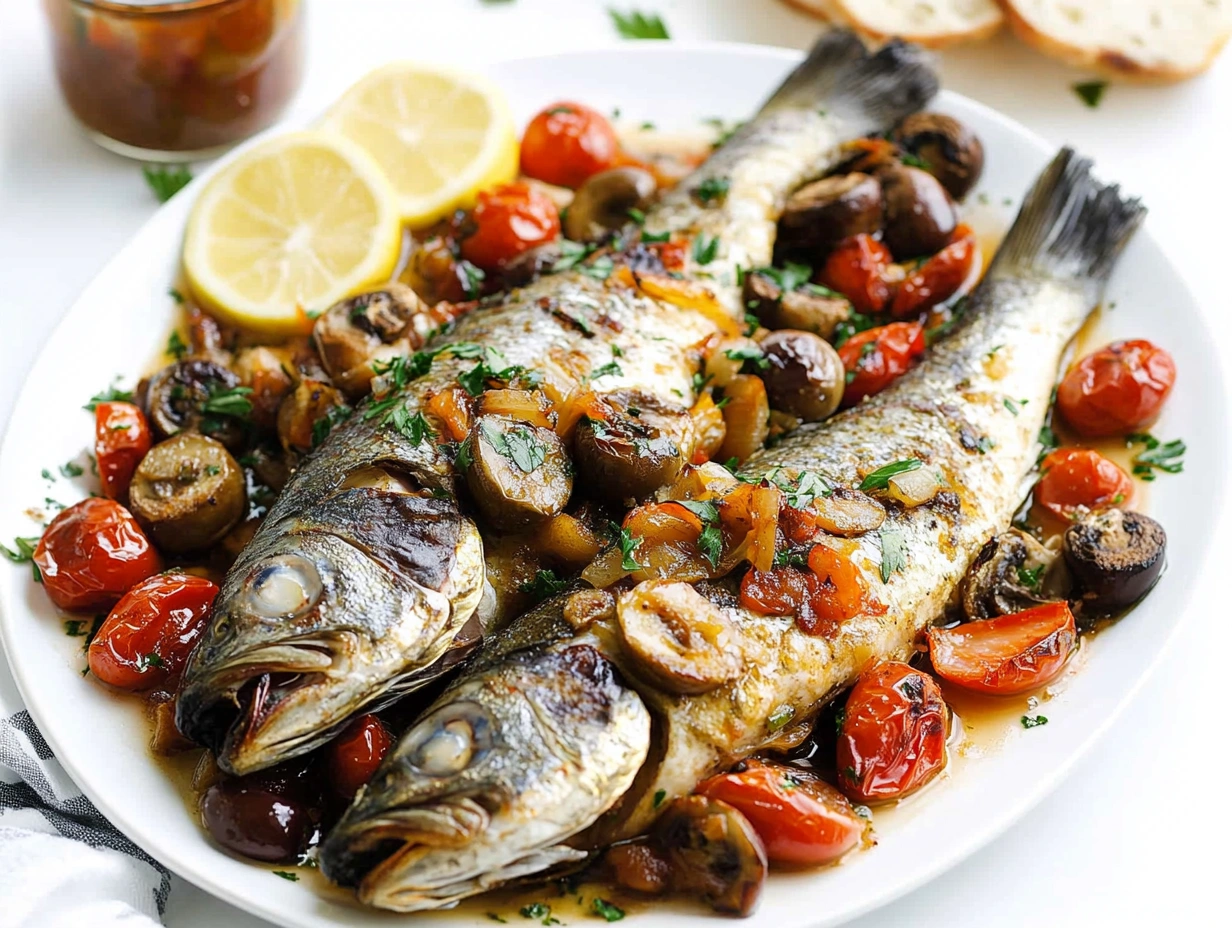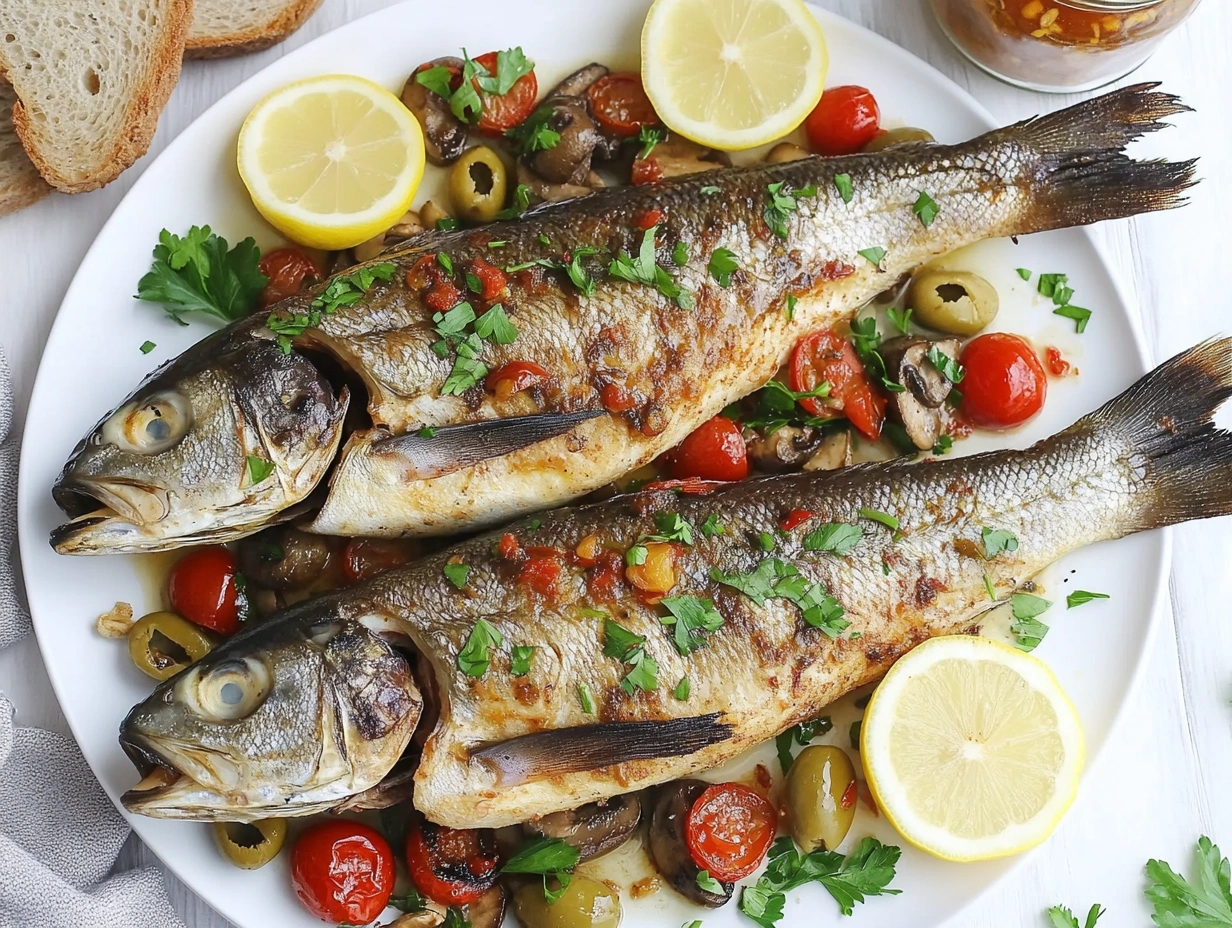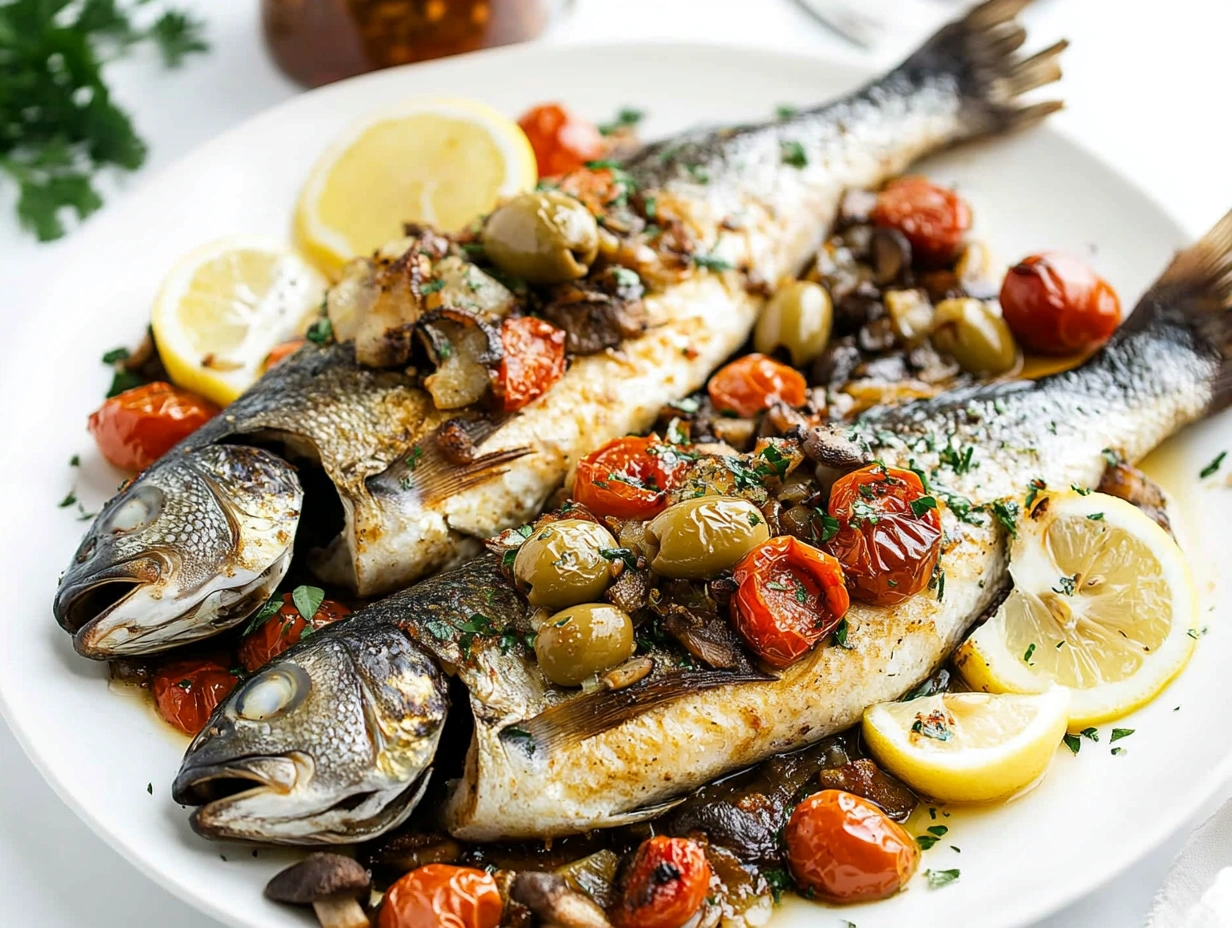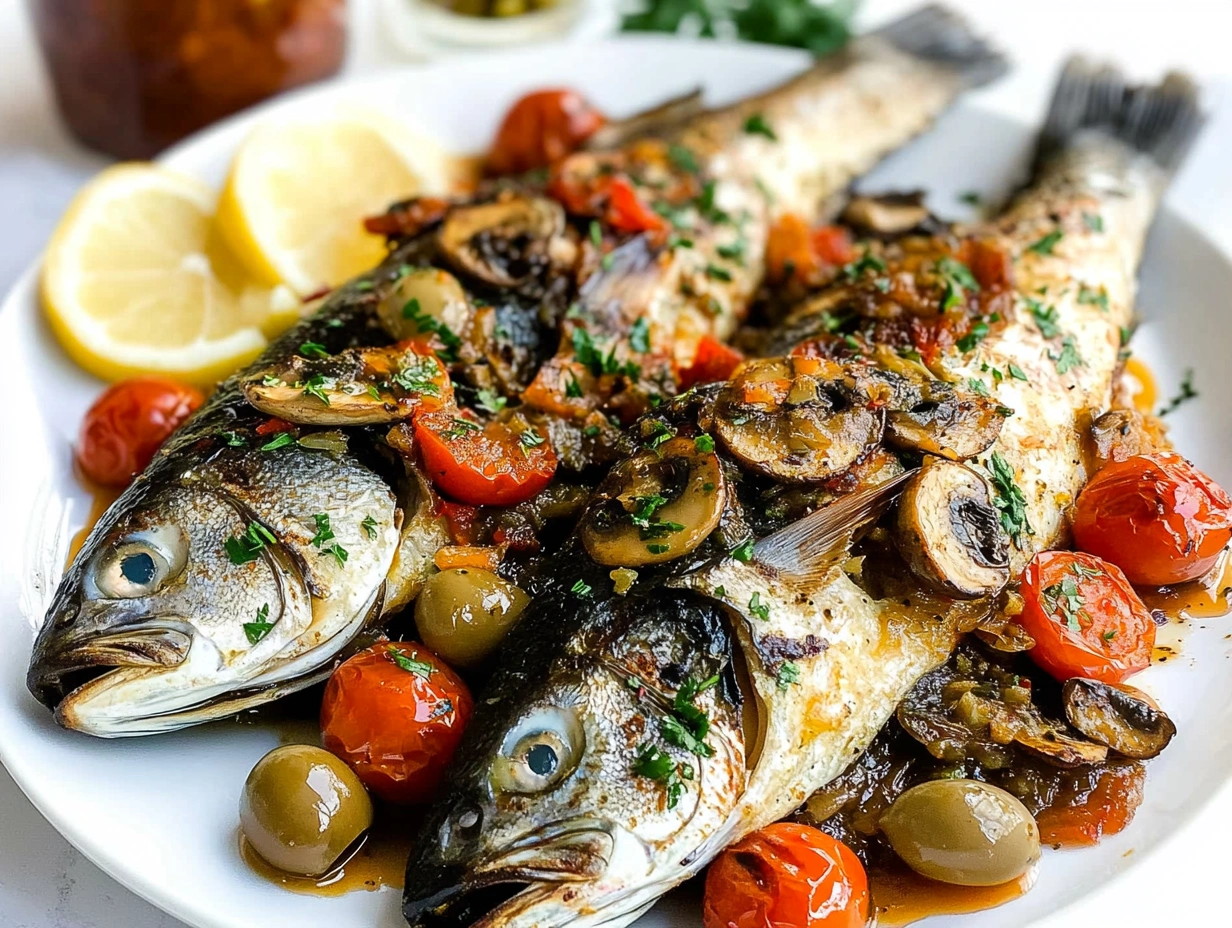What Makes Branzino Special?
When it comes to Mediterranean cuisine, Branzino holds a special place on the table. Also called European sea bass, Branzino is known for its delicate, buttery flavor and flaky texture. This versatile fish has become a favorite not only in Italy and Greece but across the globe. Its subtle sweetness makes it suitable for a variety of preparations, whether roasted, grilled, pan-fried, or steamed.
Understanding how to cook and eat Branzino is about more than just recipes—it’s about appreciating its unique appeal. This fish is often served whole, with the head, tail, and bones intact, creating a striking presentation. Its thin, edible skin crisps up beautifully when cooked, adding both flavor and texture.
Beyond taste, Branzino’s nutritional profile makes it a wise choice. Rich in lean protein and omega-3 fatty acids, it promotes heart health and supports cognitive function. Learning how to cook and eat Branzino means adding a wholesome, flavorful ingredient to your repertoire.
Why Learn How to Cook and Eat Branzino?
Why should you bother mastering how to cook and eat Branzino? Because it’s simpler than you might think! Despite its luxurious reputation, Branzino is remarkably easy to prepare, even for novice home cooks. Its mild flavor makes it a crowd-pleaser, perfect for everything from family dinners to elegant dinner parties.
Additionally, cooking Branzino at home can save you money. This fish is a common menu item in high-end restaurants, but with the right guidance, you can achieve restaurant-quality results in your own kitchen.
If you’re looking to elevate your seafood dishes, mastering how to cook and eat Branzino is an excellent place to start. For inspiration, you can explore Primetasty’s seafood guides.
How to Choose the Right Branzino
Freshness Matters in How to Cook and Eat Branzino
When it comes to seafood, freshness is key, and Branzino is no exception. Knowing how to cook and eat Branzino starts with selecting the best quality fish. Here are some foolproof tips to ensure you pick a fresh catch every time:
- Eyes: The eyes should be bright, clear, and slightly bulging. Cloudy or sunken eyes are a red flag.
- Gills: Flip the fish to check the gills. They should be vibrant red or pink, never brown or gray.
- Smell: Fresh Branzino should have a clean, briny scent reminiscent of the ocean. If it smells overly fishy or sour, it’s past its prime.
- Skin and Scales: The skin should be shiny and moist, while the scales should adhere tightly to the body.
- Texture: Press the fish gently with your finger. Fresh fish will spring back quickly; if the flesh remains indented, it’s not fresh.
If purchasing frozen Branzino, look for fillets that are vacuum-sealed and free of ice crystals, which can indicate freezer burn. Whether fresh or frozen, choosing high-quality fish sets the foundation for success when learning how to cook and eat Branzino.
Whole Fish vs. Fillets
The decision between whole fish and fillets depends on your cooking method and level of expertise. Here’s a breakdown:
- Whole Branzino: Cooking a whole fish is a hallmark of how to cook and eat Branzino. This method preserves the fish’s natural juices, resulting in a moist, flavorful dish. The bones and skin also contribute to the overall taste, making this option a favorite for roasting and grilling.
- Fillets: For those seeking convenience, fillets are an excellent choice. They’re easier to work with and cook faster than a whole fish. Fillets are perfect for methods like pan-frying or steaming.
For more insights on selecting seafood, visit this guide.
How to Prepare Branzino for Cooking
The First Step in How to Cook and Eat Branzino
Preparation is key when mastering how to cook and eat Branzino. While buying pre-cleaned fish is an option, you may sometimes need to clean it yourself. Here’s how:
- Scaling the Fish: Use a fish scaler or the back of a knife to remove the scales. Gently scrape the scales starting at the tail and moving toward the head, working against their natural direction. Rinse thoroughly under cold water to remove any residue.
- Cleaning the Fish: Make an incision along the belly of the fish and remove the innards. Be sure to rinse the cavity thoroughly under cold water.
- Drying the Fish: Pat the fish dry with a clean towel. This process is essential to ensure the skin becomes perfectly crispy during cooking.
For detailed cleaning instructions, visit Primetasty’s step-by-step seafood guides.
Prepping for Flavor
Flavor is what makes learning how to cook and eat Branzino so rewarding. Proper seasoning and stuffing can transform this simple fish into a showstopping dish:
- Seasoning: Start with a generous sprinkle of sea salt and freshly ground black pepper. You can also drizzle the fish with olive oil for added richness.
- Stuffing: Fill the cavity with fresh herbs (like thyme, rosemary, or parsley), lemon slices, and crushed garlic cloves. This combination enhances the fish’s natural flavor without overpowering it.
- Scoring: If cooking a whole fish, score the skin with shallow diagonal cuts. This allows heat to penetrate evenly and helps the seasoning soak in.
Popular Methods for How to Cook and Eat Branzino
Roasting Branzino
One of the most popular methods for how to cook and eat Branzino is roasting. It’s simple, elegant, and brings out the best in the fish:
- Preheat your oven to 400°F (200°C).
- Line a baking sheet with parchment paper and drizzle with olive oil.
- Place the prepared Branzino on the sheet and stuff it with herbs and lemon.
- Roast for 20-25 minutes, or until the flesh is opaque and flakes easily.
Grilling Branzino
Grilling adds a smoky flavor that enhances the natural taste of Branzino:
- Heat the grill to a medium-high setting and lightly coat the grates with oil.
- Place the whole Branzino on the grill and cook for 6-8 minutes per side.
- Serve with a squeeze of fresh lemon juice.
Pan-Frying Branzino
For a crispy, golden exterior, pan-frying is an excellent option:
- Warm some olive oil in a non-stick pan set to medium heat.
- Place the Branzino fillet skin-side down and cook for 4 minutes.
- Flip and cook for another 2-3 minutes.
Steaming and Poaching
For those looking for lighter options, steaming and poaching are worth exploring:
- Steaming: Cook the fish gently over simmering water, flavored with ginger and scallions.
- Poaching: Simmer the fish in a broth made with wine, garlic, and fresh herbs.
For more advanced techniques, visit Primetasty’s Branzino recipe collection.

Essential Ingredients for How to Cook and Eat Branzino
Mediterranean Essentials
To master how to cook and eat Branzino, it’s essential to focus on fresh, high-quality ingredients that highlight the fish’s delicate flavor. Mediterranean-inspired ingredients perfectly complement Branzino and enhance its natural taste. Here’s what you need:
- Olive Oil: A staple in Mediterranean cooking, high-quality olive oil adds richness and subtle fruitiness to the dish. Use it for marinating the fish, brushing on before grilling, or as a finishing drizzle.
- Lemon: Bright and zesty, lemon juice cuts through the fish’s natural oils, adding a refreshing tang. Lemon slices can also be stuffed into the cavity for aromatic roasting.
- Garlic: Fresh garlic brings depth and warmth to the flavor profile. Thinly sliced garlic can be added to the cavity or infused into sauces for added complexity.
- Herbs: Herbs like rosemary, thyme, parsley, and dill are ideal for seasoning Branzino. Whether stuffed inside the fish or sprinkled on top, fresh herbs create a fragrant and flavorful dish.
Perfect Pairings
The right accompaniments can elevate how to cook and eat Branzino, transforming it into a truly memorable meal. Consider pairing your dish with these complementary sauces and condiments:
- Ladolemono: This simple Greek dressing, made from olive oil, lemon juice, and a pinch of oregano, is perfect for drizzling over grilled or roasted Branzino.
- Pesto: A classic Italian sauce of basil, garlic, pine nuts, and Parmesan, pesto adds a herby richness that pairs beautifully with Branzino’s light flavor.
- Chermoula: A Moroccan-inspired blend of cilantro, parsley, garlic, and spices, chermoula introduces bold, earthy notes to the dish.
For inspiration on sauces and sides, check out Primetasty’s Mediterranean recipes.
Step-by-Step Guide: How to Cook and Eat Branzino
Preparing Your Ingredients
Before you start cooking, gather and prepare all the necessary ingredients. Here’s what you’ll need:
- 1 whole Branzino (cleaned and scaled)
- Olive oil
- 1 lemon (sliced)
- 2-3 garlic cloves (thinly sliced)
- Fresh herbs (rosemary, thyme, parsley)
- Sea salt and freshly ground black pepper
Cooking Instructions
Whether roasting or grilling, the key to mastering how to cook and eat Branzino lies in following precise steps.
Roasting Branzino:
- Preheat your oven to 400°F (200°C).
- Place a sheet of parchment paper on a baking tray and add a light drizzle of olive oil over it.
- Score the fish by making shallow diagonal cuts on each side. Rub olive oil, salt, and pepper into the skin and cavity.
- Fill the cavity with slices of lemon, garlic, and fresh herbs.
- Roast the fish for 20-25 minutes or until the flesh flakes easily with a fork.
Grilling Branzino:
- Preheat your grill to medium-high heat. Oil the grates to prevent sticking.
- Prepare the fish as described above, stuffing it with lemon and herbs.
- Place the whole fish directly on the grill. Cook for 6-8 minutes per side, flipping carefully with a spatula or tongs.
Plating Your Dish
Presentation is an important aspect of how to cook and eat Branzino. To serve the dish beautifully:
- Arrange the roasted or grilled Branzino on a large platter.
- Add fresh herbs and lemon wedges as a garnish to enhance the presentation with vibrant color.
- Serve alongside simple sides like roasted vegetables or a crisp salad.
For more plating ideas, check out this visual guide.

Tips for How to Eat Branzino
Navigating the Bones
Eating a whole Branzino can seem tricky, but with the right technique, it’s straightforward:
- Use a fork to separate the top fillet from the spine, starting from the head and working toward the tail.
- Lift the backbone gently with a knife or fork and remove it in one piece.
- Enjoy the bottom fillet, checking for any remaining small bones.
Eating the Skin
One of the highlights of learning how to cook and eat Branzino is the crispy skin. When cooked correctly, the skin is a flavorful, crunchy addition to the dish. If you’re unsure about eating the skin:
- Ensure it’s thoroughly cooked and crisp.
- If you prefer not to eat it, simply peel it off with a fork before eating the fillet.
Serving Suggestions
Branzino can be served family-style or in individual portions:
- Family-Style: Place the whole fish on a serving platter with sides like roasted potatoes and steamed greens.
- Individual Portions: Plate each person’s portion with a fillet, a wedge of lemon, and a drizzle of sauce.
For more serving ideas, visit Primetasty’s tips on fish preparation.
Common Mistakes in How to Cook and Eat Branzino
Avoid Overcooking
Overcooking is a common mistake when learning how to cook and eat Branzino. To maintain tender, flaky flesh:
- Use a meat thermometer to check the internal temperature. The fish is fully cooked when its internal temperature hits 145°F (63°C).
- Remove the fish from heat as soon as it’s opaque and flakes easily.
Improper Preparation
Failing to clean or season the fish properly can compromise the final dish. To avoid this:
- Double-check that all scales have been removed before cooking.
- Generously season both the cavity and the outer skin for maximum flavor.
Serving Mishaps
Presenting Branzino without breaking it requires care:
- Use a large spatula to transfer the fish to the serving platter.
- Avoid overcrowding the platter with garnishes, which can make the fish difficult to handle.

Side Dishes for How to Cook and Eat Branzino
Classic Mediterranean Pairings
The right side dishes can elevate how to cook and eat Branzino into a complete, well-balanced meal. Mediterranean-inspired sides bring out the best in Branzino’s delicate flavor. Here are some classic pairings:
- Lemon Rice: A simple dish made with steamed rice, fresh lemon juice, and parsley. The citrusy brightness complements the fish beautifully.
- Roasted Potatoes: Toss baby potatoes in olive oil, garlic, and rosemary, then roast until golden. Their crispy exterior and tender interior pair wonderfully with Branzino.
- Fresh Salads: A Greek salad with cucumbers, tomatoes, olives, and feta is a refreshing addition. For a lighter option, try arugula with lemon vinaigrette.
- Grilled Vegetables: Zucchini, bell peppers, and asparagus, lightly charred on the grill, add smoky depth to your meal.
For additional inspiration, check out this guide to side dishes to pair with seafood.
Perfect Beverages
Pairing the right drink with Branzino enhances the overall dining experience. Here are some top choices for how to cook and eat Branzino:
- White Wine: Crisp, dry wines like Sauvignon Blanc, Pinot Grigio, or a classic Chardonnay pair perfectly with the fish’s light flavor.
- Sparkling Wine: A chilled Prosecco or Cava complements Branzino beautifully, especially for celebratory meals.
- Cocktails: Consider light, citrus-based cocktails like a classic gin and tonic with a slice of lime or a refreshing mojito.
- Non-Alcoholic Options: Lemon-infused sparkling water or a homemade citrus spritzer is a great alternative for non-drinkers.
Variations in How to Cook and Eat Branzino
Regional Recipes
Branzino is a versatile fish featured in various cuisines worldwide. Learning how to cook and eat Branzino through regional recipes can bring exciting new flavors to your table.
- Greek Style: Marinate the fish in olive oil, oregano, garlic, and lemon before grilling. Serve with a side of tzatziki for added Mediterranean flair.
- Italian Style: Roast Branzino with cherry tomatoes, capers, olives, and fresh basil for a classic Italian dish.
- Asian-Inspired: Steam Branzino with ginger, scallions, and soy sauce, then drizzle with sesame oil for an umami-packed dish.
Stuffed Branzino
Stuffing a whole Branzino is a great way to add flavor and moisture. When mastering how to cook and eat Branzino, try these filling ideas:
- Herb and Citrus: A mix of parsley, dill, and lemon slices creates a fresh and aromatic stuffing.
- Mediterranean: Combine sun-dried tomatoes, olives, and capers for a bold, savory filling.
- Asian: Use lemongrass, ginger, and cilantro for a fragrant twist.
Alternative Fish Options
If Branzino is unavailable, you can still practice how to cook and eat Branzino with similar white fish varieties. Consider these alternatives:
- Sea Bream: Another Mediterranean favorite, with a slightly firmer texture but a similar flavor profile.
- Rainbow Trout: A more affordable option that can be prepared using the same techniques as Branzino.
- Snapper: This mild, flaky fish works well with many of the same recipes and flavors.
For more information on alternative fish options, visit Primetasty’s guide on seafood cooking.
How to Store and Reheat Branzino
Best Practices for Leftovers
Proper storage is essential for maintaining the freshness of cooked Branzino. Follow these tips to keep leftovers tasting great:
- Cooling: Allow the fish to cool to room temperature before storing.
- Storage Containers: Use airtight containers to prevent odors from spreading in the fridge.
- Refrigeration: Store leftovers in the refrigerator for up to two days.
If you’re not planning to eat the leftovers immediately, consider freezing them. Wrap the fish tightly in plastic wrap, then place it in a freezer-safe bag. Properly frozen Branzino can last up to three months.
Reheating Tips
Reheating Branzino without drying it out can be tricky. Here’s how to do it right:
- Oven Method: Preheat your oven to 300°F (150°C). Place the fish on a baking sheet, cover it loosely with foil, and heat for 10-15 minutes.
- Stovetop Method: Reheat fillets in a non-stick pan over low heat with a bit of olive oil.
- Avoid the Microwave: Microwaving can make the fish rubbery and unevenly heated.
For more tips on storing seafood, check out this helpful guide.
Why You Should Master How to Cook and Eat Branzino
Health and Flavor Benefits
Learning how to cook and eat Branzino is not just about creating delicious meals—it’s about making healthier choices. Branzino is:
- Rich in Omega-3 Fatty Acids: These healthy fats support heart health and reduce inflammation.
- High in Protein: Branzino is a lean protein source that helps with muscle repair and satiety.
- Low in Calories: Ideal for those watching their caloric intake while still enjoying flavorful meals.
Incorporating Branzino into your diet is a simple way to enjoy nutritious, satisfying dishes without compromising on taste.
Expanding Your Culinary Skills
Mastering how to cook and eat Branzino opens the door to countless other seafood recipes and techniques. Preparing Branzino teaches valuable skills such as:
- Filleting and deboning fish.
- Creating balanced, flavorful marinades.
- Experimenting with global flavors and cooking methods.
Whether you’re hosting a dinner party or cooking for yourself, Branzino’s versatility makes it the perfect choice for enhancing your cooking repertoire.
Conclusion: How to Cook and Eat Branzino
By following this guide, you’ve learned everything you need to know about how to cook and eat Branzino, from selecting the freshest fish to mastering different cooking techniques and serving suggestions. Branzino is more than just a delicious dish—it’s a culinary experience that brings the essence of Mediterranean cuisine to your table.
For additional resources, check out Primetasty’s seafood recipes or explore high-authority sites like Bon Appétit’s guide to cooking whole fish. With practice and creativity, you’ll soon be serving perfectly cooked Branzino that rivals your favorite restaurant.
Would you like tips on specific Branzino recipes or related seafood dishes? Let me know, and I’ll be happy to assist!


2 thoughts on “How to Cook and Eat Branzino: A Complete Guide”